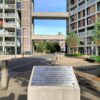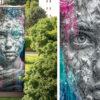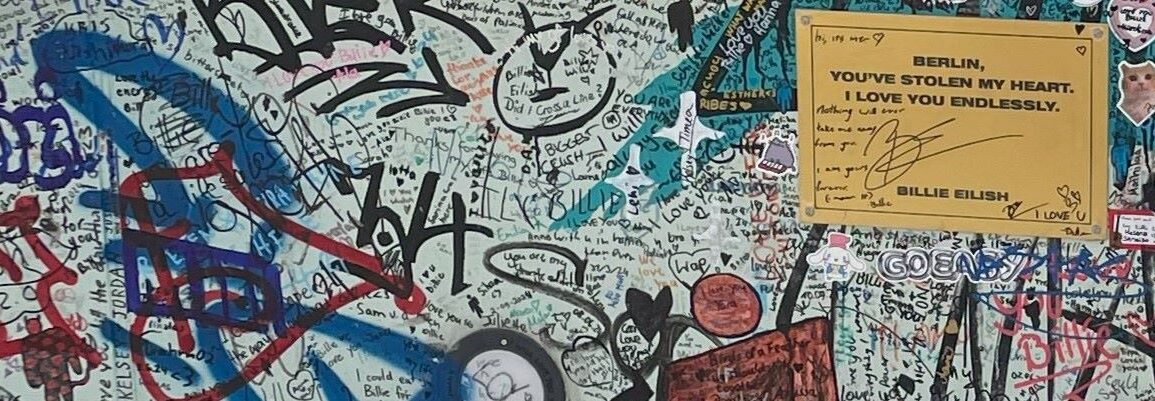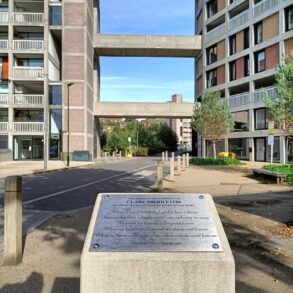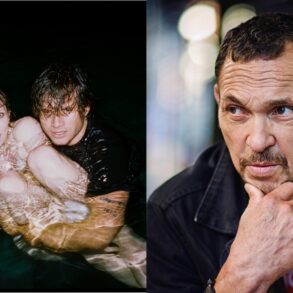Sonneberg, GERMANY – As a Taiwanese person, my visit to Germany over the summer was filled with interesting discoveries.
World history classes have given me sufficient knowledge of Germany’s turbulent history in the 20th century, but visiting the actual places where the events happened was an entirely different experience.
Since a lot of Germany was destroyed in WWII, I had to use my imagination to visualize what the Berlin Wall area or the Nuremberg Rally Grounds would have looked like. But there were still small physical remains that could be seen: including memorials, signs, and graffiti. Aside from history, they also reflect more modern culture and events.
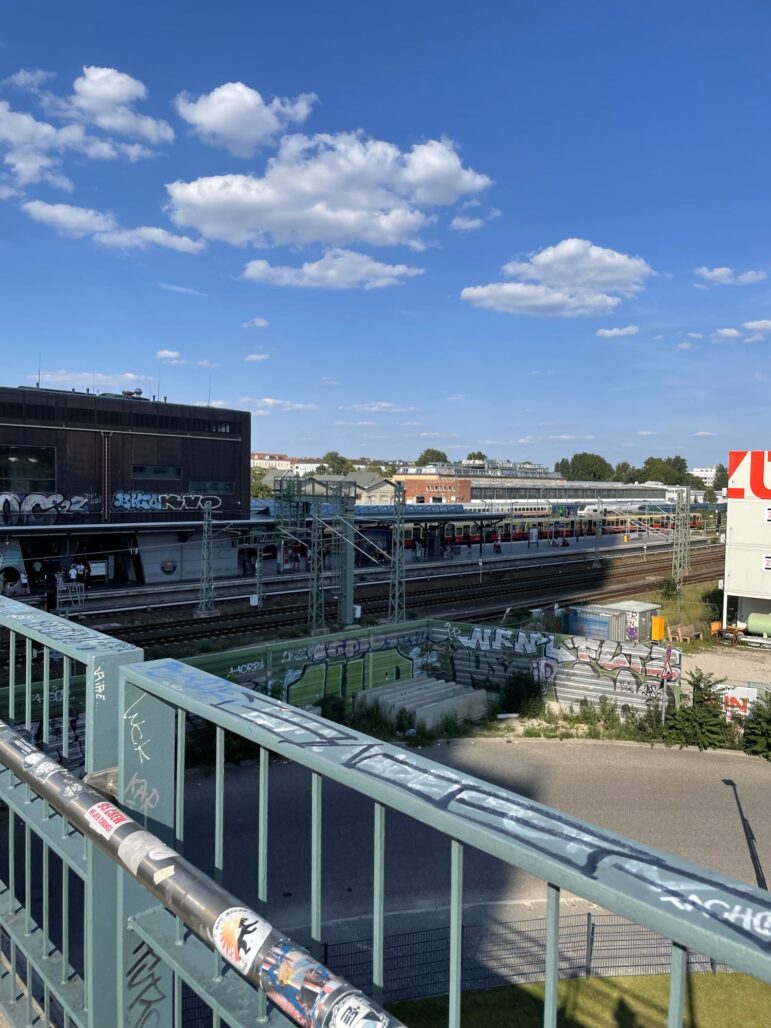
My host family kindly took me on a weekend trip to Berlin during my stay.
My first impressions? Graffiti, and a lot of it. On buildings, handrails, street signs, and even the remaining parts of the original Berlin Wall.
Despite the growing graffiti art community in Taiwan, most people in my country still consider graffiti an annoyance to property owners and think of graffiti artists as delinquents.
But in Germany, graffiti on the Berlin Wall first started as an act of activism against the division of the city.
Artists like Thierry Noir painted the wall despite it being illegal, starting from 1984 all the way until 1989 when the wall officially fell. Pieces of the wall were sold to different galleries across the world as art, while some of them stand on Berlin streets as public art.
Nowadays, Berlin is famous for its street graffiti art, and you can see graffiti everywhere. I visited the “Billie Wall,” a staircase outside the East Side Mall where the famous pop singer Billie Eilish took a picture. Many fans wrote their love for the singer onto the wall and stairs of the location.
I think the act of graffiti on the Berlin Wall is extremely poetic. The wall, a representation of oppression and violence, is turned into a canvas for people to create. During my trip, I visited the East Side Gallery, an outdoor art gallery showcasing murals on the east side of the Berlin Wall.
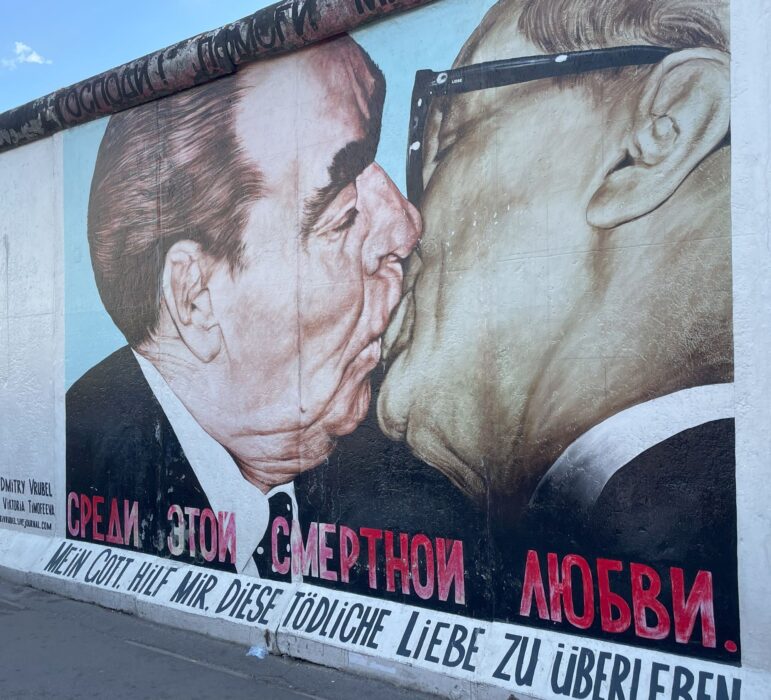
A famous piece is Dmitri Vrubel’s mural My God, Help Me to Survive this Deadly Love (Mein Gott, hilf mir, diese tödliche Liebe zu überleben) painted in 1999. It depicts the leaders of the Soviet Union and the German Democratic Republic (East Germany) – Leonid Brezhnev and Erich Honecker – sharing a fraternal kiss at the 30th anniversary celebration of the German Democratic Republic in a satirical way.
The close-up angle focusing on the kissing lips makes the scene seem ironic – the two leaders were dividing families and communities across Germany while being all “brotherly” with each other.

I also saw the Berlin Wall used to put a spotlight on modern political movements.
One piece of the Wall, now in Alexanderplatz, has “Free Belarus” written in an eye-catching spot. This refers to the widespread protests by Belarus citizens against the Belarusian government and President Aleksandr Lukashenko during the 2020 presidential election.
The protests started because Lukashenko was declared the winner of the election on August 9th, but the opposing candidate Sviatlana Tsikhanouskaya rejected the results due to suspected vote rigging.
The EU also released a statement supporting Tsikhanouskaya, calling for new elections. The protesters were violently prosecuted, leading to sanctions from various EU countries, Canada, the United States and other countries, but the election results were never reversed.
This slogan written on the Berlin Wall is a form of showing solidarity to the protesters in Belarus. It reflects how German people are also concerned about humanitarian crises in other countries.
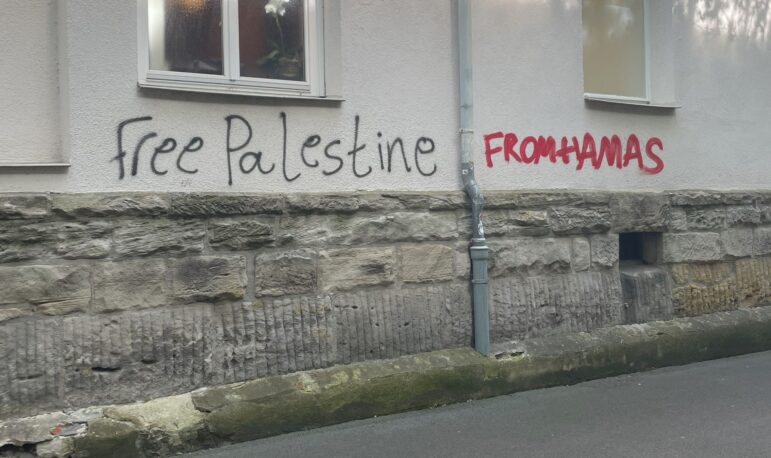
Another example of modern political issues in graffiti is about the Israel-Palestine conflict. Since October 7th, 2023, the conflict has spread from Gaza to Lebanon and nearby countries, according to Al-Jazeera, with more than41,000 people killed and 95,000 injured in Gaza and more than 1,130 killed in Israel and 200 more held captive.
There is widespread concern that the conflict is escalating into a full-on regional war.
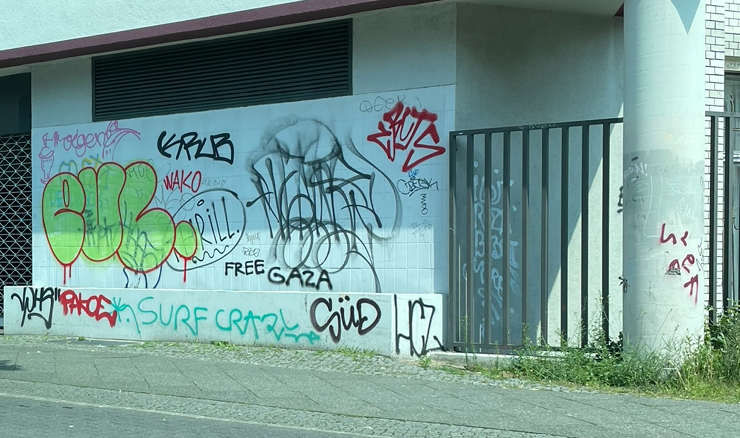
In Berlin, I saw many walls with graffiti reading “Free Gaza.” In Coburg, a wall reading “Free Palestine” had an addition – “From Hamas” – which appeared to be from another person. This shows the controversy surrounding the conflict, with some considering Hamas a terrorist group and Israel defending itself, while others see Israel’s attacks on Hamas as genocide.
Stances on this topic are complicated and often too nuanced to split into two sides.
It is interesting to me how German people also show concern for the Gaza crisis. In Taiwan, most news only covers the situation from an economic perspective, as in showing concern over how the war might affect stocks.
Most Taiwanese people are neutral and aversive to politics and do not show much interest in global affairs, either.
Although differing opinions might cause division and discomfort, I still think people in Taiwan should also educate themselves on issues around the world to broaden their understanding.
A common memorial to Holocaust victims are the “Stolperstein” Stumbling Stones. They are small metal plates embedded in cobblestone streets, usually in smaller towns, outside the house where the victim used to live.
The victim’s name, birth year, death year, and experience during the Holocaust are carved into them.
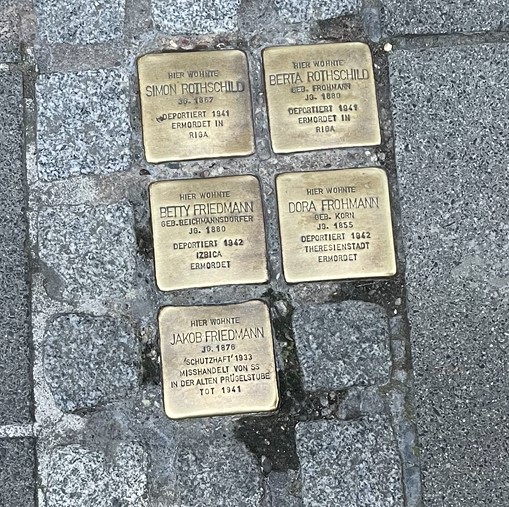
I saw a cluster of these stones on a street in Coburg and took a picture to look them up on the Holocaust Survivors and Victims Database. It was chilling to read their stories of deportation and death. There was an elderly couple who had to close their business due to Kristallnacht, the night of November 9th to 10th in 1938 when Nazi officers destroyed and attacked Jewish property.
They were deported to the Riga Ghetto in Latvia before dying shortly after. It was hard to imagine these people as real and killed just because of their race, just roughly 80 to 90 years ago. These little stones serve as a reminder to cherish the peace we have and to never discriminate based on anything people are born with.
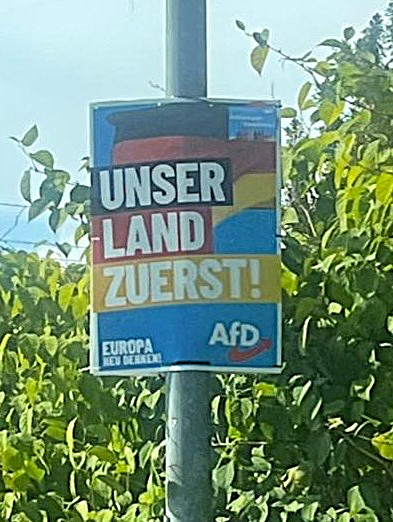
Graffiti and signs against the German far-right political party Alternative for Germany are also common. Sonneberg, the town in the state of Thuringia where my host family lives, is the first place where a candidate from this party won a district council election in 2023.
In 2024, the Alternative for Germany party’s momentum has only grown as the regional elections in September had Brandenburg, the hometown of German Chancellor Olaf Scholz, almost elect an Alternative for Germany candidate according to the BBC.
Alternative for Germany is notorious for its far-right, discriminatory policies and stances against immigrants, and policies to “protect the old Germany.” Supporters are dissatisfied with Germany’s high immigration rates and what they deem as special benefits granted to these immigrants.
Others raise eyebrows at the fascist and climate change denial statements they use in their promotional material, according to Vox.

One of the most radical Alternative for Germany politicians is Björn Höcke, shown in this billboard in Sonneberg.

Hocke has spoken against Holocaust remembrance, stating it as “erasing German victims, only German perpetrators” according to Reuters.
He also faced backlash for doing the Nazi hand sign several times and is facing trial for using the Nazi slogan “Alles für Deutschland!” or “Everything for Germany!” during a speech in 2021.
In Sonneberg, Alternative for Germany blue signs are on many street posts, but opposing signs are, too.
One reads “Leadership culture or Free State?” asking voters to not vote for Alternative for Germany.
Another states, “Whoever votes for the AFD is voting for Fascism.”
I also spotted a sticker with the words “Fuck AFD” on an info board at the Berlin Wall in Berlin.
This list represents the growing political divide between liberal and conservative voters in Germany and frankly, all around the world as we see increasingly radical politicians taking power.
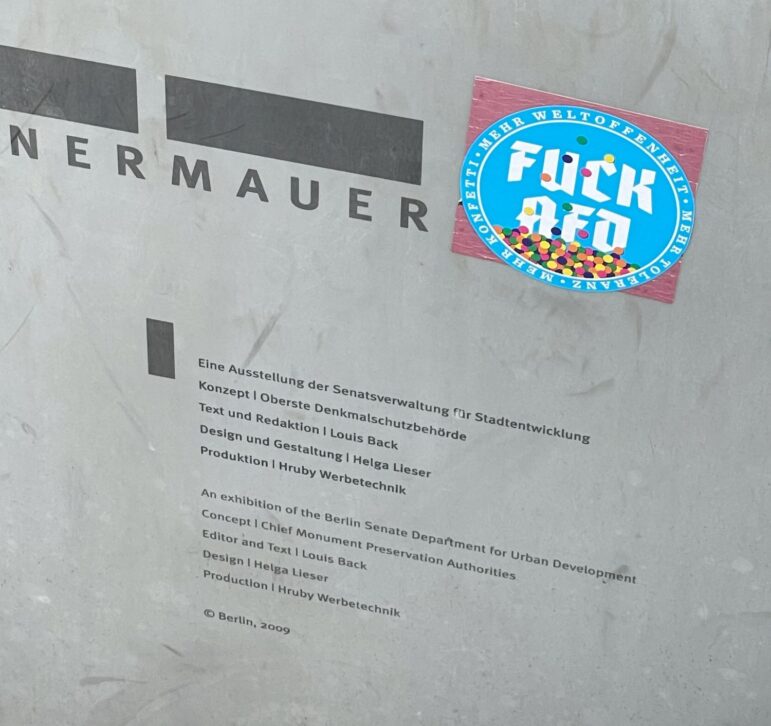
Aside from political meanings, other signs and graffiti are fun and even become well-known memes.
In famous tourist sites across Germany, bright yellow stickers with the words “Nett Hier” (Nothing here) and the sentence “But have you ever been to Baden-Württemberg?” can be seen.
The one I saw was at the famous Berlin Brandenburg Gate. The punchline of this meme is that Baden-Württemberg is considered a plain place with nothing to see at all. This sticker has spread to places across the world, there even is one on Mount Everest in a TikTok video.

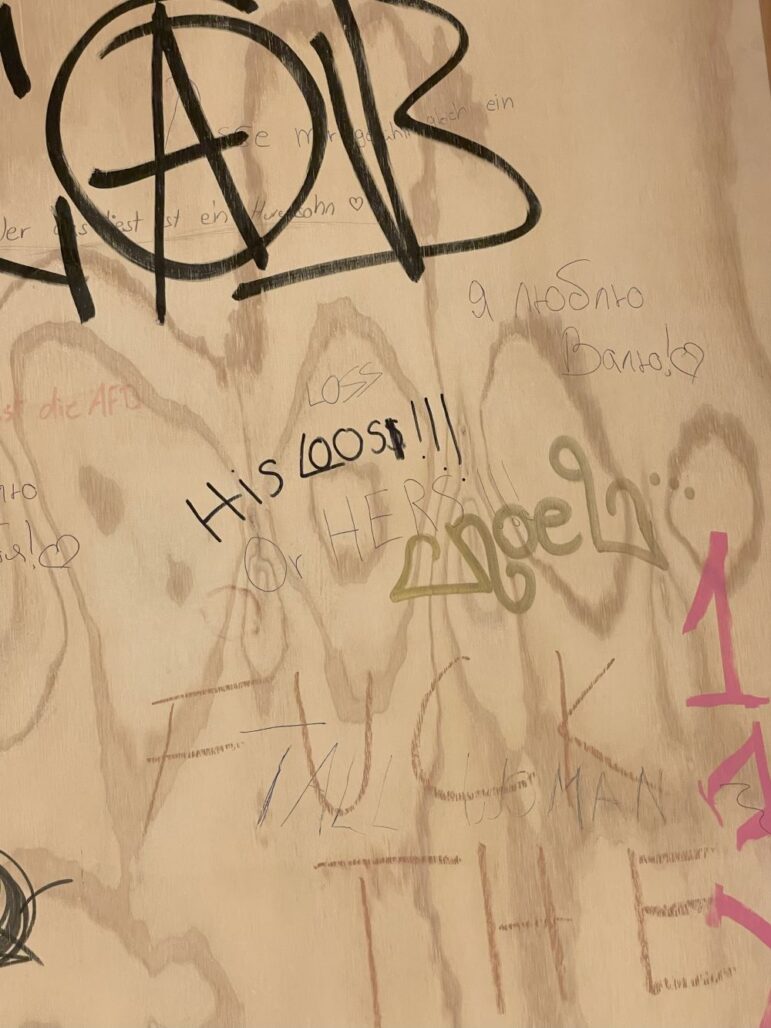
Even the dressing rooms of Urban Outfitters in Berlin were filled with graffiti, but of encouraging and uplifting messages to shoppers. One sentence reads “His loss!” with someone else adding “Or hers” to include people who were broken up with by women.
Many messages were left in different languages. It is heartwarming to see people from all over the world visit Berlin and compliment each other through these messages, a reminder that despite our differences, most of us still hold love for others.
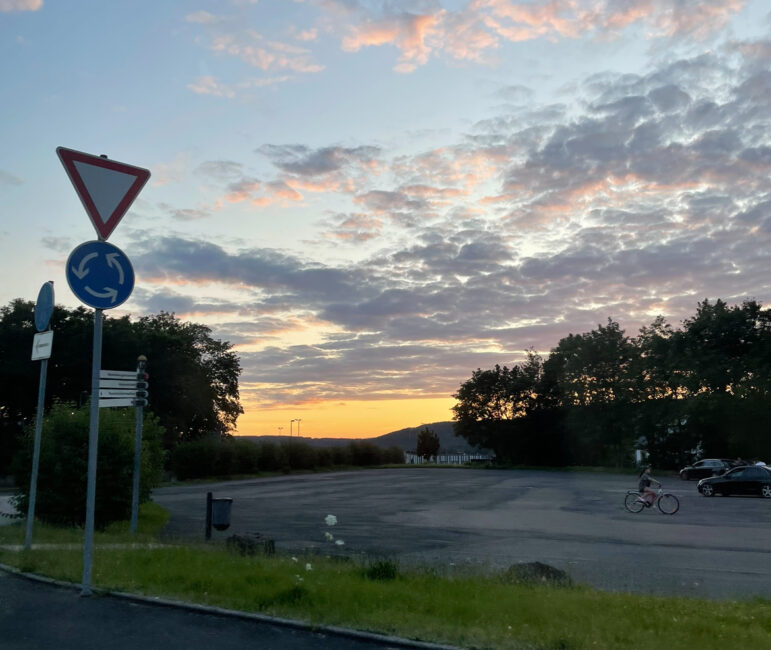
My experience in Germany was both enjoyable and thought-provoking. I was constantly shocked by the contrast between old historical events and modern thoughts.
I remember walking along a random block in Berlin and checking Google Maps, just to find out that the place I went past was the location of Hitler’s Führerbunker, the place where he died. It wasn’t marked with anything, and I was struck by how much had happened between his death and the day I stood there. He used to hold so much power he could carry out a genocide, and now he lies in an empty grass lot.
Fast forward to the modern day. I observed the political tension within and outside of Germany through these street graffiti and signs.
It was interesting to hear high school students in Germany say they want to leave their country due to political situations when I, as a Taiwanese person, have always feared I would be forced to leave my country due to political situations.
Sitting there in Sonneberg by the pool with these high school students at dusk, I wondered if there was any place where political issues did not linger in the air. Perhaps it is a question everyone across the world must answer in their heart.
Yuhan Tsai is a Junior Reporter with Youth Journalism International.
This post was originally published on this site be sure to check out more of their content.

